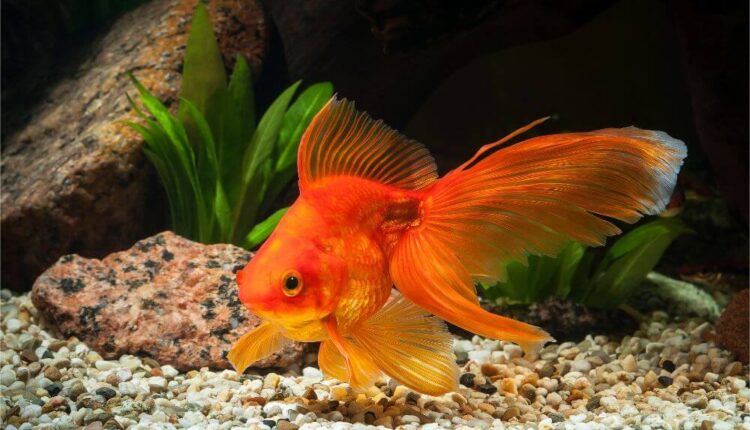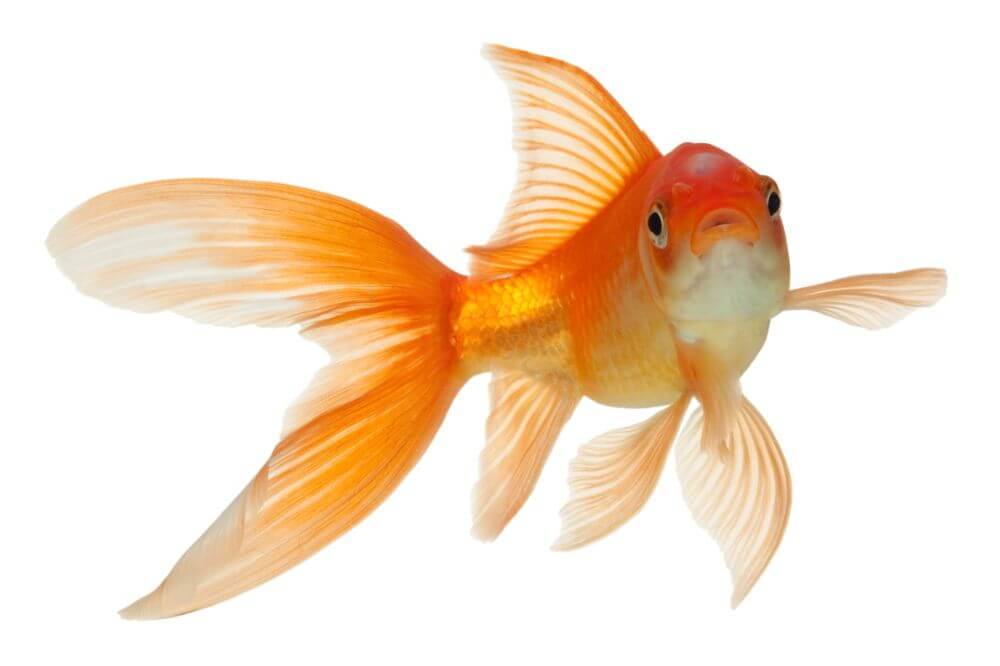How Long do Goldfish Live?
How Long do Goldfish Live?

The goldfish is a member of the carp family, native to East Asia. During China’s Tang dynasty, they began to be cultivated for ornamental purposes and bred for red, orange, and yellow varieties. Once people started keeping goldfish indoors, it created new opportunities for fancy fins and other specialized features. Today, goldfish are one of the most popular aquarium fish in the world. But how long do goldfish live?
How Long do Goldfish Live in the Wild?
The truth is, goldfish as we know them today don’t live in the wild. They are descended from the Prussian carp, which can live up to 10 years or even longer. However, the Prussian carp is a silver fish, which helps it live longer by making it more difficult for predators to see.
Because today’s goldfish are so vividly colored and often have fancy fins and other unusual shapes, they cannot survive long in the wild. They are too easily visible and too slow-moving to escape predators in the natural environment.
However, it is common to keep goldfish in outdoor ponds and water features, where they have less human care and maintenance than fish in a fish tank. A goldfish can live in an outdoor pond for 25 years or more.
How Long do Goldfish Live in a Fish Tank?
The common goldfish often only survives in a fish tank for about 5 years, but that is unfortunately due to improper care and unhealthy conditions. However, with good care, they can live 10 years or more.
Several record-holding goldfish survived in fish tanks for over 40 years, including Goldie, who was 45 years old when he died. Interestingly, the record-holding longest-lived pet goldfish were often acquired for free from fairs and carnivals, a practice that is now frowned upon, if not illegal, in many places.
How Long do Fancy Goldfish Live in an Aquarium?
Fancy goldfish have been selectively bred to have more and larger fins, a rounded body shape, and other features that make them more prone to health conditions and shortened lifespans. In good conditions, a fancy goldfish will live for 5 to 10 years.
How to Help a Goldfish Live Longer
Because goldfish can live in cooler water temperatures, they were often kept in simple bowls in the past, and that remains a popular image of how people keep a pet goldfish. However, like all members of the carp family, goldfish produce a lot of waste and have high needs for water filtration and oxygenation.
So today, many countries have made it illegal to keep goldfish in bowls because it is unhealthy for the fish. Here are some ways to help a goldfish live longer.
Common Goldfish Longevity Tips
Give Them Enough Room
Depending on the species, many goldfish can grow to be nearly two feet long. However, they may stay just 1-2 inches long in smaller tanks and more crowded conditions and seldom reach more than 6 inches.
Giving them a large tank helps keep the water quality more consistent, reduces the effects of mess and waste, and gives them room to grow. Allow at least 10 gallons of water for every goldfish in your fish tank.
Keep the Tank Clean
Goldfish produce a lot of waste and need a clean tank for better health and longer life. Good goldfish care consists of balancing manual cleaning and regular water changes and natural water cleaning systems like tank cycling or tank cleaning species.
Because goldfish are peaceful, they can easily be kept with other cold water algae eaters that help to keep the water clean and healthy.
Feed a Proper Diet
Like their wild ancestors, goldfish appreciate a diverse diet. In addition to offered food and flakes, you may occasionally provide snacks of bloodworms, cooked rice, shelled peas, small pieces of watermelon or grape, leafy greens, and more. For a healthier goldfish:
Choose Goldfish-Specific Fish Food
Look for goldfish pellets or foods that sink. When feeding flakes, soak them first to prevent the goldfish from gulping air when they eat.
Feed Small Amounts Twice a Day
Goldfish are naturally opportunistic eaters who will eat anything available. This can lead to health problems from overeating and make the tank more difficult to keep clean. Offer as much food as your goldfish will eat in less than 2 minutes per feeding, or a total of 5 minutes of eating a day.
Keep the Water Oxygenated
Goldfish don’t have fussy temperature requirements but do like lots of oxygen. Consider using an air stone to help them breathe easily.
Keep Them Entertained
Contrary to their reputation, goldfish are active, intelligent fish who benefit from richer, more engaging environments. They are among the easiest fish species to train to do tricks and play games.
Give them a tank with plants, rocks, and caves to explore and hide in. Consider creating tunnels or adding floating toy balls to keep their tank interesting.
Consider Keeping Them Outdoors
Because pet goldfish can get so large and live so well in outdoor ponds, you may consider creating a pond for your adult goldfish. Many people cultivate goldfish indoors to a specific size, then move them to an outdoor pond, where they can survive even freezing weather. To create a goldfish pond, here are a few tips.
Larger is Better
Similar to indoor fish tanks, larger ponds are better. A larger surface area allows for better oxygenation of the water, and larger water volumes are more stable and less susceptible to variations of temperature and chemistry.
Site Your Pond Well
The best outdoor fish ponds have a good mix of light and shade throughout the day, so the goldfish can find a comfortable temperature for themselves. Natural light also helps benefit your pond plants and create a healthy environment.
Filter and Oxygenate the Water
Adding a pump and filter helps to keep the water clean. A well-balanced pond may only need the filter cleaned a few times a year. Make sure the water is well oxygenated, especially if it has lots of aquatic plants. Adding a waterfall, fountain, or air pump provides needed oxygen.
Reduce or Stop Feeding Outdoor Goldfish Over Winter
Depending on the climate, your goldfish’s metabolism will slow down and may hibernate during the winter. As the weather gets colder, they require less food. Increase feeding in the spring, when hungry goldfish wake up and start looking for food.
Fancy Goldfish Longevity Tips
Keep Them Away From Competition
Because fancy goldfish move more slowly than their single-fin cousins, it is unwise to keep them in the same tank together. Although goldfish are peaceful and do not attack each other, the faster fish are likely to eat all the food more quickly than the fancy ones can reach it.
As a result, fancy goldfish have been malnourished and hungry in tanks with a lot of competition from faster fish.
Keep them at the correct temperature. Because of their short, compact body shape, fancy goldfish are more prone to swim bladder disease caused by improper digestion. Keeping the tank a few degrees warmer than common goldfish require aids digestion and protects them from swim bladder problems.
Use Sinking Food
Because they are so susceptible to swim bladder problems, it is essential to prevent fancy goldfish from gulping air. Soak flakes before feeding, or choose sinking pellets. Gel-based food is especially good for fancy goldfish because it sinks, it’s easily digestible, and it doesn’t swell in water like pellets do, potentially causing bloating.
Conclusion
Although goldfish are incredibly popular as pets and hardy, low-maintenance fish, they seldom reach their entire lifespan in a home fish tank. In fact, one of the reasons they may not live as long as possible is because of their ability to live so long and become so large over time.
While fancy goldfish have a shorter lifespan, common goldfish are excellent pets for keeping indoors, training and bonding with, and then transitioning to an outdoor pond where they have the room to reach their full potential.
With proper care and conditions, a goldfish can live for decades, and these active, intelligent pets can be rewarding companions for the whole family.

